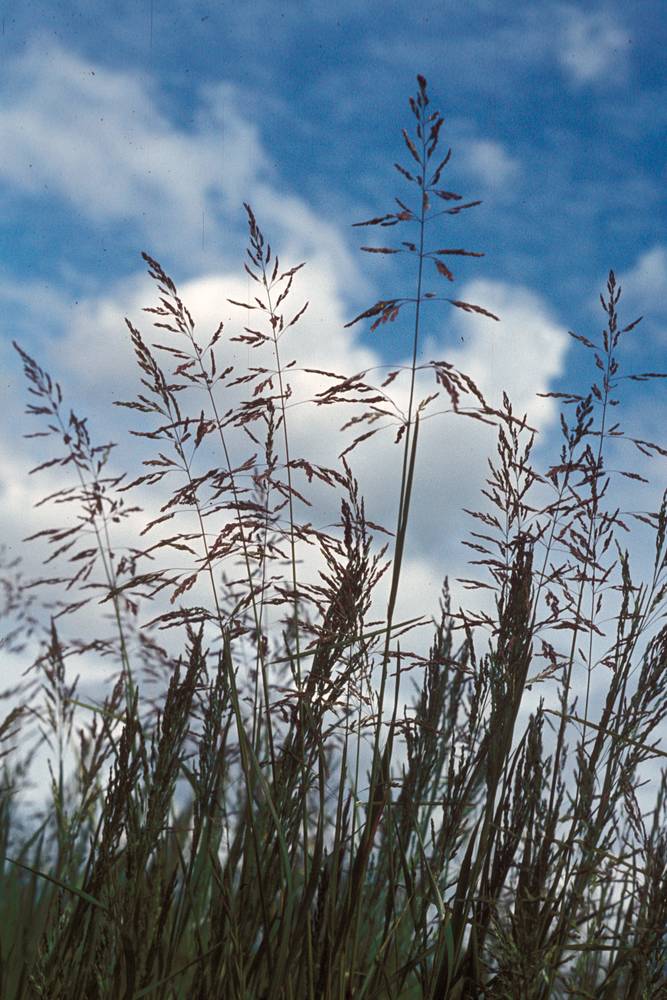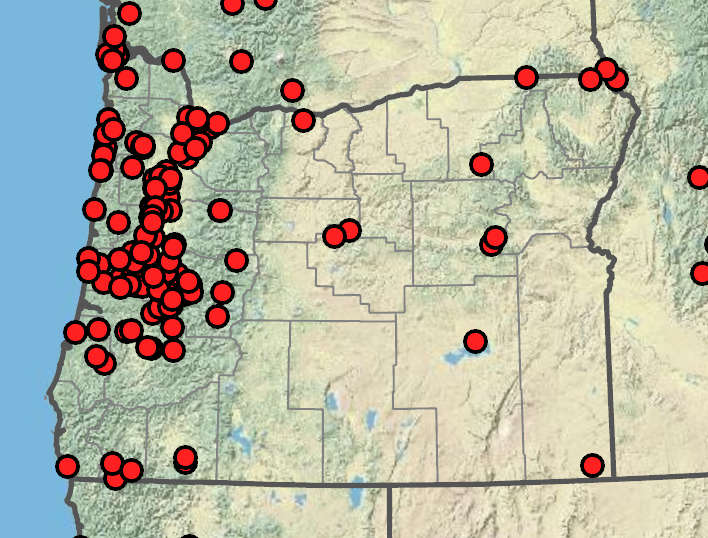Poa cuspidata
Poa trivialis
rough bluegrass
sometimes trailing and rooting at the nodes;
nodes terete or slightly compressed; (0)1–3 exserted.
intravaginal.
sheaths closed about 25– 50% of their length, usually densely scabrous, bases of basal sheaths glabrous;
collars smooth or scabrous, glabrous;
ligules 3–10 mm;
blades flat, 1–5 mm wide, scabrous.
erect or lax; pyramidal; open, 8–25 cm;
spikelets 35–100+;
branches ascending to spreading, flexuous to fairly straight, 2–8(10)cm, 3–7 per node, with 5–35 spikelets in distal 50–75%.
to 3 times as long as wide, 2.5–4(5)mm;
florets 2–4;
rachilla internodes smooth or muriculate.
keels scabrous;
lower glumes subulate to narrowly lanceolate, usually arched to crescent-shaped, 1-veined, distinctly shorter than lowest lemma.
with cobwebby hairs more than 67% as long as the lemma.
lanceolate, distinctly keeled, 2.3– 3.5 mm;
keels with usually sparse, inconspicuous; soft; short hairs in the proximal 67%; marginal veins glabrous or infrequently with short hairs on the proximal 25%; area between the veins smooth, glabrous; upper lemmas sometimes glabrous throughout;
margins glabrous;
tips acute.
1.3–2 mm.
=14.
Poa cuspidata
Poa trivialis
Disturbed areas, riparian areas, moist deciduous forest, pastures, lawns, roadsides. 0–1700m. BR, BW, Casc, Col, CR, Est, Sisk, WV. CA, ID, NV, WA; throughout most of North America; Europe. Exotic.
Poa trivialis is identified by rough, scabrous foliage and 1-veined, usually sickle-shaped lower glumes. Poa pratensis is more strongly rhizomatous and has smooth foliage, and has lower glumes that are usually 3-veined and lanceolate.
Rob Soreng, Barbara Wilson, Richard Brainerd, Nick Otting
- Local floras:
BC,
CA,
OR,
WA
- Local Web sites:
CalFlora,
CalPhotos,
Flora NW,
PNW Herbaria
WildflowerSearch
iNaturalist (observations)
USDA Plants Database
- LBJ Wildflower Center
- SEINet
- Plants of the World Online
- Encyclopedia of Life
- Wikipedia
- Google Image Search



